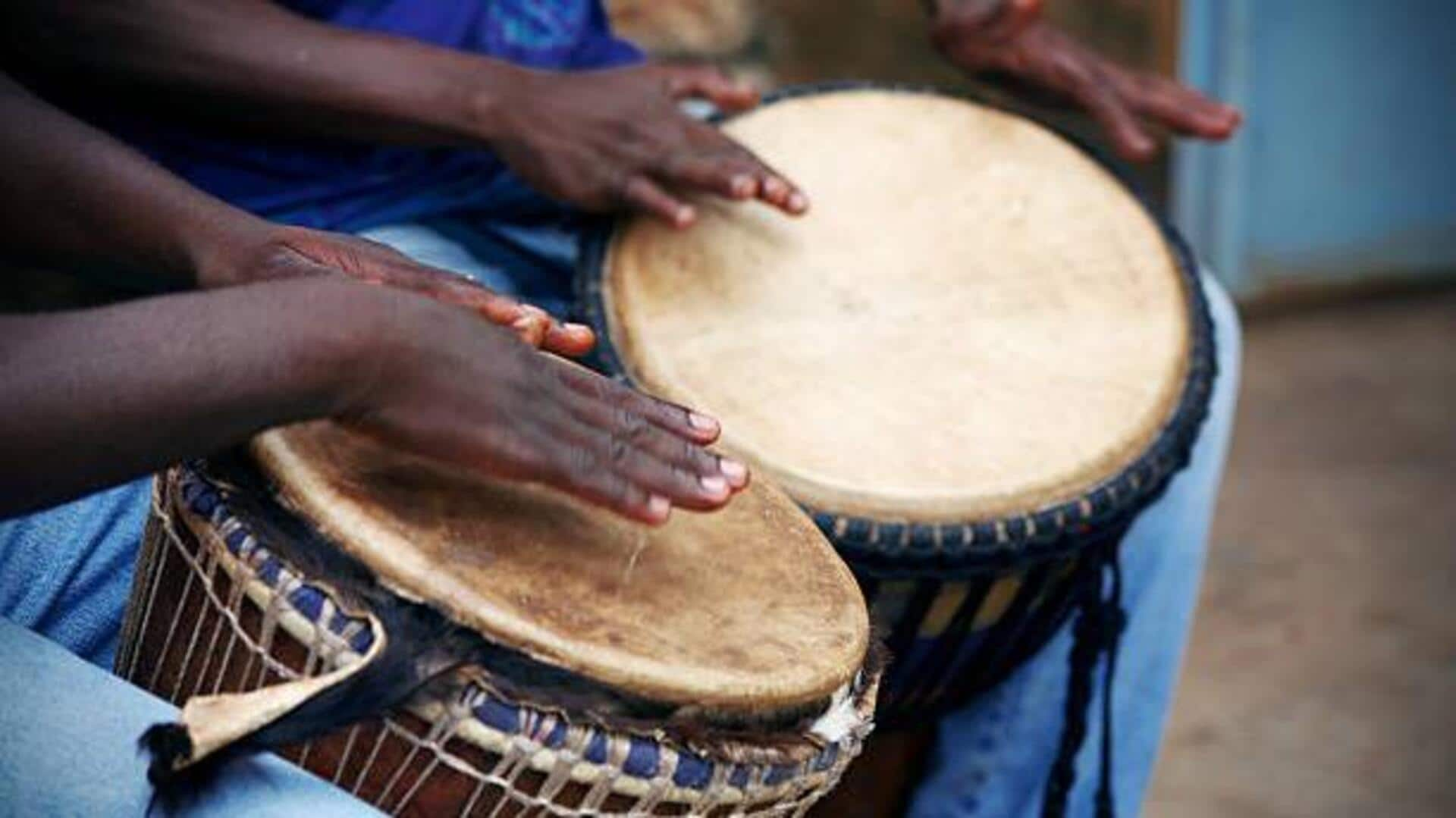
African drum beats: 5 must-know rhythms
What's the story
African percussion rhythms are an essential element of the continent's exquisite musical heritage. These rhythms have played a significant role in shaping music across the globe, providing us some of the most unique beats and patterns to lose ourselves in. Knowing these rhythms can be an eye-opener into African culture and history of music. Here are five must-know African percussion rhythms for you.
Djembe beats
Djembe rhythms
The djembe is a famous West African drum that has a versatile sound. Played with bare hands, the instrument is capable of producing a vast range of tones. Traditional djembe rhythms often accompany dance and ceremonies, with each rhythm having its own cultural significance. The djembe's ability to produce bass, tone, and slap sounds makes it an expressive instrument in any ensemble.
Kpanlogo groove
Kpanlogo from Ghana
Hailing from the Ga people of Ghana, the kpanlogo rhythm is matched with a dance style bearing the same name. The syncopated beats produce an energetic groove that can really get the party started. The kpanlogo drum ensemble is usually accompanied by bells and shakers to add to the rhythmic complexity, making it a go-to favorite for dancers.
Ewe beats
Ewe drumming patterns
The Ewe people of Ghana and Togo are famous for their intricate drumming patterns. Their music often involves polyrhythms, where multiple rhythms are played together to create complex textures. Instruments like the atsimevu lead the ensemble while the supporting drums add depth to the performance. Ewe drumming is integral to community events and storytelling traditions.
Talking drum sounds
Talking drum techniques
The talking drum is unique because it can mimic human speech by modulating pitch. Native to West Africa, the hourglass-shaped drum changes pitch with tension cords when squeezed under the arm. The curved stick or hand strikes on either side head surface area allow varied tonal expressions. Used in communication across distances in the past, they're used in musical performances today. Audiences still globally appreciate them.
Bantu rhythms
Bantu percussion styles
Bantu percussion styles include the rhythmic traditions of different ethnic groups across Central Africa. Although culturally disparate within the region itself, these communities are grouped under this term for their common linguistic roots. This involves drums like ngoma and other percussive instruments such as rattles, sticks, and clappers. They all add to the colorful soundscapes of these communities' celebrations, rituals, and day-to-day activities.